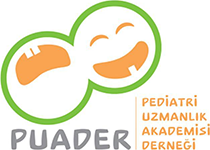A Rare Pathology of a Child Rescued from the Rubble in the Kahramanmaraş Earthquake: Left Brachial Plexus Injury and Diaphragmatic Paralysis
Mutluhan Yiğitaslan1 , Gülenay Aktay1
, Gülenay Aktay1 , Eda Eyduran2
, Eda Eyduran2 , Gülizar Koç2
, Gülizar Koç2 , Gökçen Özçifci2
, Gökçen Özçifci2 , Fatih Durak3
, Fatih Durak3 , Ayşe Berna Anıl3
, Ayşe Berna Anıl3
1İzmir Tepecik Training and Research Hospital, Department of Pediatrics, Izmir, Türkiye
2İzmir Tepecik Training and Research Hospital, Pediatric Intensive Care, Izmir, Türkiye
3Katip Çelebi University Faculty of Medicine, Pediatric Intensive Care, Izmir, Türkiye
Keywords: Earthquake, pediatric intensive care, brachial plexus injury, diaphragmatic paralysis
Abstract
The primary destructive effect of earthquakes is sudden devastating trauma. A healthy seven-year-old male was rescued after 35 hours under the rubble in Kahramanmaraş earthquake. CPR was performed at the scene, he was intubated and transferred to a nearest pediatric intensive care unit. He was followed in pediatric intensive care unit due to crush syndrome and lung contusion for two days and then transferred to ward. While receiving oxygen therapy at the ward, the patient was intubated due to sudden respiratory distress. Since there was no empty bed in the intensive care unit of the hospital, he was transferred to the intensive care unit of our hospital. The patient had effusion in the left hemithorax, hemorrhagic contusion in the right lung, and peri splenic fluid. The patient, who had hemodynamic instability, markedly high renal functions, widespread edema, oliguria and hematuria, received 24-hour hemodiafiltration treatment. After extubating, the patient continued to experience respiratory distress, had limited movement and weakness in the left upper extremity, and diaphragmatic elevation was identified on the left side in the chest X-ray. The patient was diagnosed with left brachial plexus injury and left diaphragmatic paralysis by thoracic ultrasound, cervical vertebrae and left brachial plexus MRI. Over time, respiratory stress was relieved and oxygen support was gradually reduced and discontinued. In conclusion, it is necessary to perform repeated neurological examinations after sedation is discontinued and to assess continued respiratory distress after extubating to detect trauma-related diaphragmatic paralysis.
Cite this article as: Yigitarslan M, Aktay G, Eyduran E, Koc G, Ozcifci G, Durak F, et al. A Rare Pathology of a Child Rescued from the Rubble in the Kahramanmaraş Earthquake: Left Brachial Plexus Injury and Diaphragmatic Paralysis. Pediatr Acad Case Rep. 2023;2(supp1):8-11.
The parents’ of this patient consent was obtained for this study.
The authors declared no conflicts of interest with respect to authorship and/or publication of the article.
The authors received no financial support for the research and/or publication of this article.

